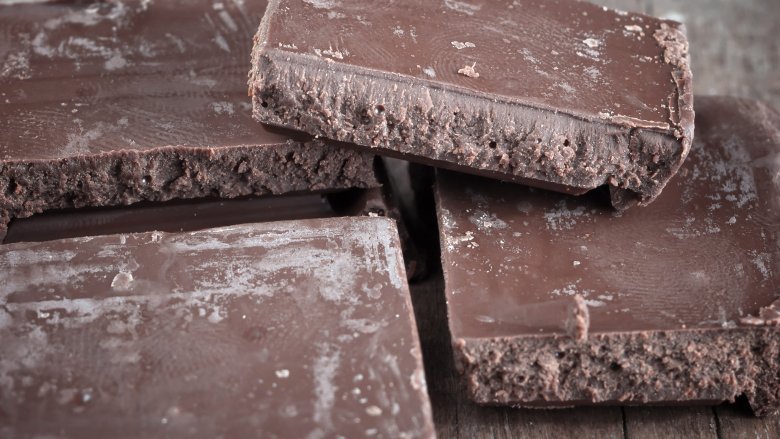Why Does Chocolate Turn White?
Perhaps you've unwrapped a piece of last year's Easter candy and noticed that your chocolate bunny has a slight white or grayish coloring to it. This mysterious color change can be a little perplexing, and there's usually one or two culprits at play behind chocolate turning white.
According to How Stuff Works, this whitening of chocolate is either caused by a sugar bloom or a fat bloom. Surface moisture that hits the chocolate causes the sugars in it to dissolve, but after that moisture dissipates, sugar crystals are left behind on the surface. Your chocolate is essentially sweating and can be a little sticky on the surface before turning white when the moisture evaporates. Known as sugar bloom, this typically happens if the chocolate is kept in a humid place or is even moved from cool storage to a warmer spot.
Fat blooming of chocolate occurs typically the same way as sugar bloom, but the fat in the chocolate separates and moves to the outer surface of the candy where it crystallizes. Chocolate just doesn't handle being moved from a cool temperature to a warmer one very well, and a bloom of both kinds can occur.
Even if you find that your chocolate has suffered a blooming effect and is now a bit white, it's still perfectly safe to eat. The downside, though, is that it may not taste quite as delicious as it had before blooming and could have a bit of a grainy texture. If you store your chocolate in a cool place (as close to the optimal temperature of 65 to 68 degrees Fahrenheit as possible), with no more than 55 percent relative humidity, it should stay bloom-free for up to six months.
You can even reverse the blooming process by melting your chocolate down and then molding it again to deposit the fat back into it (via The Kitchn). Then again, you could just give into that chocolate craving and eat it before any sugars and fat can even begin to bloom.
